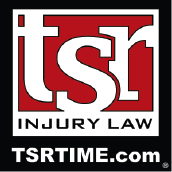What You Need to Know About Arbitration for a Minnesota Car Crash Claim?
 Crash victims may think there are only two ways to recover compensation: file an insurance claim or file a lawsuit. However, there is also arbitration, which is a quicker and less expensive process compared to a lawsuit.
Crash victims may think there are only two ways to recover compensation: file an insurance claim or file a lawsuit. However, there is also arbitration, which is a quicker and less expensive process compared to a lawsuit.
There are several things you need to know about this process, including the qualifications of arbitrators, the process involved, how long arbitration may take to complete, and how to prepare.
Below, the experienced Minneapolis-based car accident lawyers at TSR Injury Law discuss these issues. If the insurance company has undervalued your claim, give us a call to discuss the situation in a free legal consultation. We may be able to help you pursue full compensation.
In one case decided by a panel of arbitrators, TSR Partner Rich Ruohonen was able to secure more than $3 million on behalf of the victim of a semi-truck crash on highway 94.
Mandatory Arbitration of No-Fault Claims in Minnesota
Minnesota is a no-fault state, which means car crash victims usually turn to their own insurance policies to recover compensation for medical expenses, replacement services and lost wages.
Under state law, when a respondent (the insurance company) denies a no-fault claim, the respondent (injured party) must tell the claimant of his or her right to demand mandatory arbitration. This only applies to claims of $10,000 or less.
For claims worth more than $10,000 at the time arbitration begins, the insurance company can tell the claimant whether it is willing to submit to arbitration.
How the Process Starts
Things usually start with the victim’s attorney filing a Petition for No-Fault Arbitration with the American Arbitration Association (AAA). This can be done after a claim has been denied or if you do not receive compensation within 30 days of filing your claim.
The AAA sends a list of four arbitrators to both parties. These arbitrators are randomly selected. Your attorney and the insurance company may cross one arbitrator a piece off the list. They rank the other arbitrators in their preferred order. The AAA then chooses from the arbitrators left on the list.
It is important to note arbitrators are bound by a code of ethics that requires them to disclose relationships that might make them biased in favor of one party.
If an arbitrator accepts the appointment, a hearing will be scheduled on a date that is mutually agreed upon. The hearing usually occurs within four to six months. That way both sides have time to prepare.
Typically, the hearing occurs in the arbitrator’s office, a AAA office or another place that is agreed upon by both parties. Zoom is often the new mode of meeting with Covid.
Preparing for the Hearing
Both sides can share information, but they are not required to share as much as they would in a lawsuit. That said, the insurance company is entitled to the following information:
- Medical reports
- Medical authorizations directed to all medical providers the claimant consulted with in the seven years before the crash
- Employment records and authorizations for the two years before the crash if wage loss is in dispute
- Supporting documents that are required under the No-Fault Arbitration Rule
- Other exhibits that will be offered at the hearing
Your attorney can meet with you to help prepare your testimony. You should be prepared to discuss your injuries and the symptoms you are experiencing. Explain how they may have changed over time and some of the ways these symptoms impact your daily activities.
What Happens at the Hearing?
These hearings are informal – each party gets the chance to present its case and the arbitrator is free to ask questions. The arbitrator will also consider evidence that is presented, including statements from witnesses, medical records and other evidence that would be admissible in court.
Once both sides have presented their cases, the arbitrator will ask both parties if they have anything else to present. If they do not, the arbitrator will declare the hearing closed. After that, the arbitrator has 30 days to determine if compensation will be awarded and how much.
Arbitration in Non-No-Fault Claim in Minnesota
Injury claims usually resolve by settlement or a jury trial. A third option is binding arbitration. Instead of the time and expense of a jury trial, the plaintiff and defense attorney each agree to binging arbitration. Each side picks an arbitrator, and the two chosen arbitrators pick a third neutral. The three together will listen to evidence presented and at least two of them will have to agree on a verdict.
The actual hearing is similar to a fast trial. Witnesses testify, exhibits are shown and the respective attorneys present opening and closing arguments. The advantages are speed of getting to the hearing date and cost. A trial date may be a year after a lawsuit is filed and can cost $10,000 to $250,000.00 in costs for experts, depositions and other trial costs. An arbitration can often be presented for a few thousand dollars and the three arbitrators have years of experience in the personal injury filed so they can quickly process evidence, provide a hearing date months after agreement and a “verdict” is rendered quickly.
Injured in a Crash? We Are Here to Help
We know you may have many questions about what to do after a crash. That is why we offer a free legal consultation to discuss your situation. There is no obligation to take legal action after meeting with us. We do not charge upfront fees for our services and are only paid if you get paid.
Call today for assistance. (612) TSR-TIME



